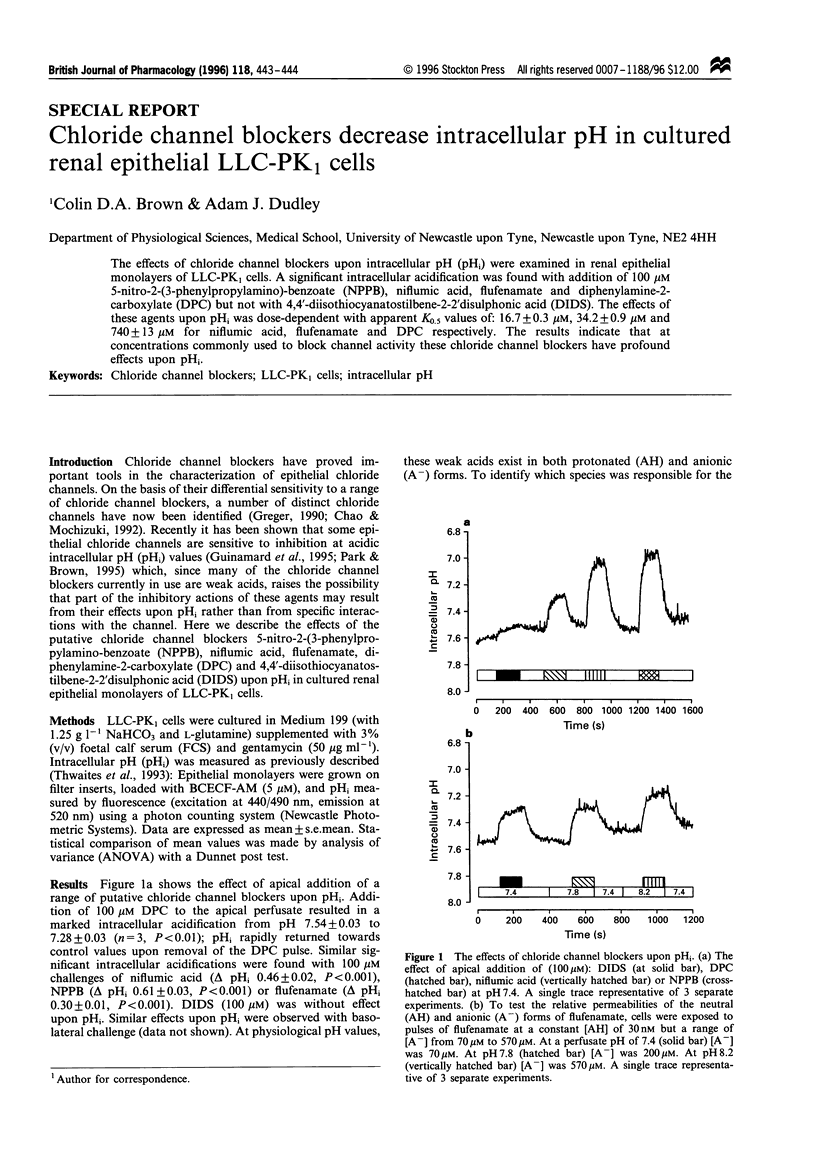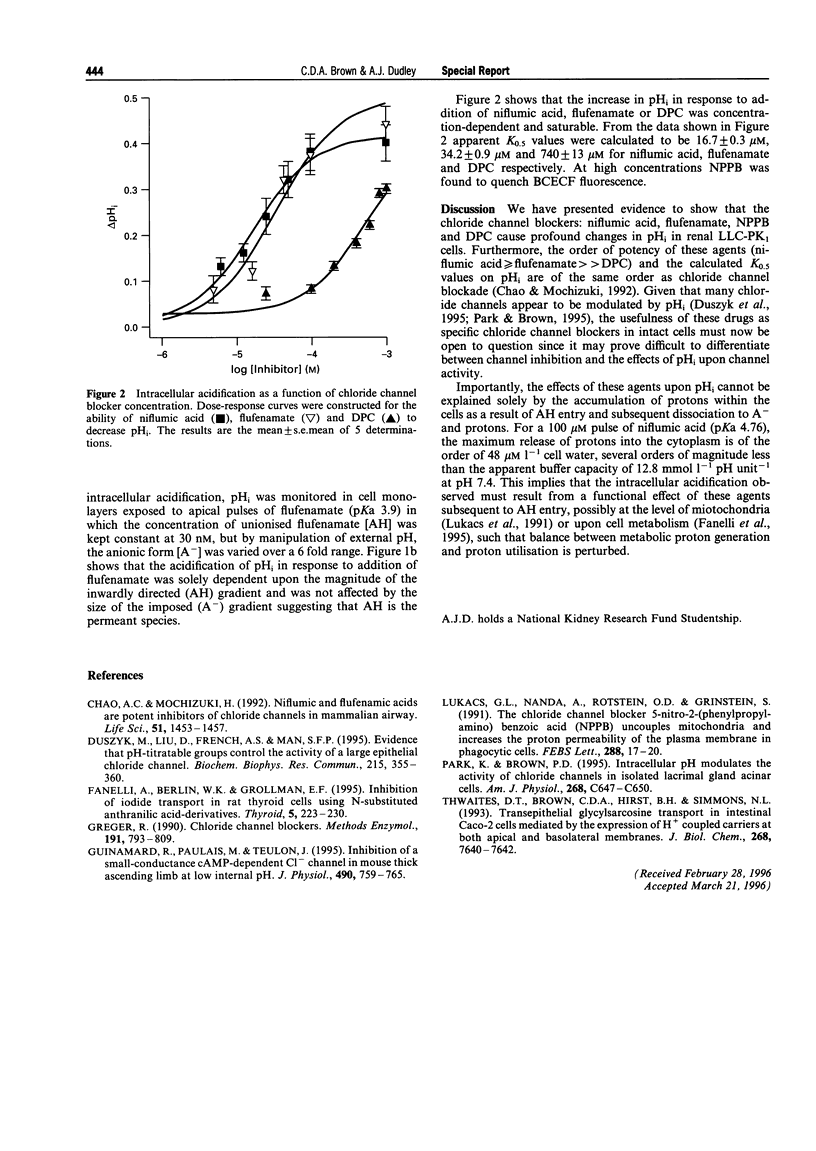Abstract
The effects of chloride channel blockers upon intracellular pH (pHi) were examined in renal epithelial monolayers of LLC-PK1 cells. A significant intracellular acidification was found with addition of 100 microM 5-nitro-2-(3-phenylpropylamino)-benzoate (NPPB), niflumic acid, flufenamate and diphenylamine-2-carboxylate (DPC) but not with 4,4'-diisothiocyanatostilbene-2-2'disulphonic acid (DIDS). The effects of these agents upon pHi was dose-dependent with apparent K0.5 values of: 16.7 +/- 0.3 microM, 34.2 +/- 0.9 microM and 740 +/- 13 microM for niflumic acid, flufenamate and DPC respectively. The results indicate that at concentrations commonly used to block channel activity these chloride channel blockers have profound effects upon pHi.
Full text
PDF

Selected References
These references are in PubMed. This may not be the complete list of references from this article.
- Chao A. C., Mochizuki H. Niflumic and flufenamic acids are potent inhibitors of chloride secretion in mammalian airway. Life Sci. 1992;51(18):1453–1457. doi: 10.1016/0024-3205(92)90540-6. [DOI] [PubMed] [Google Scholar]
- Duszyk M., Liu D., French A. S., Man S. F. Evidence that pH-titratable groups control the activity of a large epithelial chloride channel. Biochem Biophys Res Commun. 1995 Oct 4;215(1):355–360. doi: 10.1006/bbrc.1995.2473. [DOI] [PubMed] [Google Scholar]
- Fanelli A., Berlin W. K., Grollman E. F. Inhibition of iodide transport in rat thyroid cells using N-substituted anthranilic acid derivatives. Thyroid. 1995 Jun;5(3):223–230. doi: 10.1089/thy.1995.5.223. [DOI] [PubMed] [Google Scholar]
- Greger R. Chloride channel blockers. Methods Enzymol. 1990;191:793–810. doi: 10.1016/0076-6879(90)91048-b. [DOI] [PubMed] [Google Scholar]
- Guinamard R., Paulais M., Teulon J. Inhibition of a small-conductance cAMP-dependent Cl- channel in the mouse thick ascending limb at low internal pH. J Physiol. 1996 Feb 1;490(Pt 3):759–765. doi: 10.1113/jphysiol.1996.sp021183. [DOI] [PMC free article] [PubMed] [Google Scholar]
- Lukacs G. L., Nanda A., Rotstein O. D., Grinstein S. The chloride channel blocker 5-nitro-2-(3-phenylpropyl-amino) benzoic acid (NPPB) uncouples mitochondria and increases the proton permeability of the plasma membrane in phagocytic cells. FEBS Lett. 1991 Aug 19;288(1-2):17–20. doi: 10.1016/0014-5793(91)80992-c. [DOI] [PubMed] [Google Scholar]
- Park K., Brown P. D. Intracellular pH modulates the activity of chloride channels in isolated lacrimal gland acinar cells. Am J Physiol. 1995 Mar;268(3 Pt 1):C647–C650. doi: 10.1152/ajpcell.1995.268.3.C647. [DOI] [PubMed] [Google Scholar]
- Thwaites D. T., Brown C. D., Hirst B. H., Simmons N. L. Transepithelial glycylsarcosine transport in intestinal Caco-2 cells mediated by expression of H(+)-coupled carriers at both apical and basal membranes. J Biol Chem. 1993 Apr 15;268(11):7640–7642. [PubMed] [Google Scholar]


